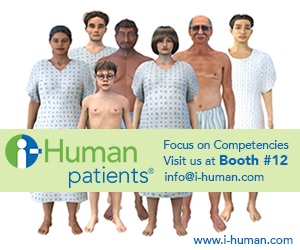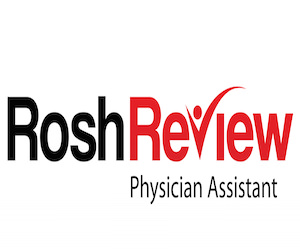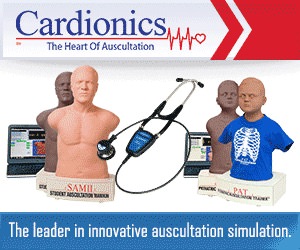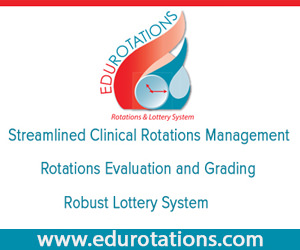Board Candidates
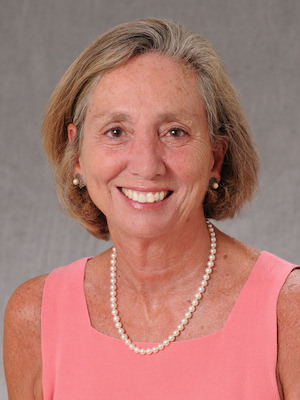
Lisa Mustone Alexander, EdD, MPH, PA-C
President Elect Platform
“It was the best of times, it was the worst of times”. This quote, from Charles Dickens’ historic novel, may capture the mindset of many PA faculty in 2016. The book’s opening passage conveyed the contradictions in social realities in Paris and London in the late 1700s. Our current professional realities are filled with contradictions as well. As educators, we strive to maintain the high educational standards of PA education, which in 2016 can be challenging due to our profession’s tremendous growth and popularity.
I am humbled and excited to be a candidate for President-elect of PAEA. While PAEA as an organization primarily serves its members, the work required to achieve our goals needs the full engagement and partnership of the membership along with the Board. As the number of PA programs continue to grow, we need to work harder to ensure the full participation of each and every faculty member working on the front lines of PA education.
My commitment to PAEA is longstanding, dating back to my first APAP (PAEA) meeting as a newly minted clinical coordinator. As my career evolved within my own institution, I was fortunate to serve on numerous PAEA committees, task forces, PAEA Board of Directors, Pando faculty, and as a PAEA Research Fellow during my recent university sabbatical. Each experience introduced me to inspirational faculty who contributed to my professional development. In June, I completed a 7-year term as a board member and past-president of the PA Foundation. My guiding principle is that service is not measured by the number of hours and years we contribute, but the personal growth we derive in the process.
I am dedicated to PAEA, equipped with a unique experiential skill set, and knowledgeable of the strategic direction of PAEA. The issues facing PA educators directly impact PAEA and include the scarcity of clinical sites, need to increase diversity in our faculty and student bodies, inculcating professionalism across the curriculum, incorporating technology and promoting excellence in our teaching and scholarship. I would be honored to work on these and other issues that will enhance the reputation of each and every member program. As PAEA continues to grow, the board must maintain their transparent oversight, advocate for the needs of members, and promote our external advocacy across multiple stakeholder groups. I hope that you will agree with me, that this truly is the “best of times” for our profession.
Responses to Association Questions
- What characterizes a high-performing Board member and which of those attributes do you posses that would provide strong contributions to the PAEA board?
“Accountable, Integrity, Commitment, Innovative, Results-oriented. ” My experiences in leadership positions throughout my career have provided me with diverse opportunities in non-profit board management and service. I have always been driven and guided by a servant leadership model that promotes the characteristics that I’ve selected as the ones that are consistent and required for the position as president-elect of PAEA. In addition to my previous service on the PAEA Board, I’ve recently completed my service as the President of the PA Foundation which enhanced my board leadership skills that are critical for a high performing board of directors. Most important is to remain focused on the mission of the organization and serving the members and external stakeholders who support that mission. In addition, a high-performing board member needs to be fully engaged in the work of the board, demonstrating strong time-management skills that facilitates the balance of work and service. Executing this balance promotes effective board service, where the individual is accountable not only to his/her peers on the board, but also the membership of the organization. Integrity requires the individual to be honest, straightforward, and effective in communicating the values and beliefs of the organization. Commitment is measured by their preparation for board meetings, availability and accessibility to members, and their external advocacy of the organization. Innovation is evident in a board member’s approach to problem solving and a results-driven character is measured by achievements and strategic decision making. I believe that I embody these critical characteristics. - If PAEA’s entire budget was represented by $100, what amount of money would you invest in products & services that benefit individual programs (e.g., exams, workshops), and what amount would you invest in initiatives that benefit the field as a whole (e.g., advocacy, legislation)? Please provide rationale for your response.
Best practices in organizational management suggest that the budget for any non-profit should reflect the mission of the organization. For the scenario described, my investment strategy would allocate $65 of the budget to products and services with the remaining $35 budgeted to external initiatives. The rationale for this allocation is grounded in my overall philosophy that the organization serves its members. We must continue to invest in products and services that benefit members. This exemplifies responsible stewardship of our financial resources while also growing a community of scholars and educational leaders in PA education. The strategy allows PAEA to increase and diversify its revenue sources, keeping dues increases to a minimum. Our organizational focus is not only internal, but external as well. As a result, budgetary support must also be directed to activities that advocate for the profession and our students. Without this, the organization risks losing its national identity as the only national organization focused on PA education. The life-cycle of any organization may require periodic adjustments based upon current circumstances. However, the Board must develop and follow the strategic plan, which guides the development of a budget. My review of PAEA’s 2013 strategic plan, reinforces the budget allocation that I have proposed. - What are some of the most important unanswered questions relating to the clinical rotation site shortage that the Board needs to address?
While there are a plethora of unanswered questions, the following is my short list that could help to promote new ideas in our ongoing dialogue on this critical question. Like many of the world’s hard problems, if the solutions were easy, someone else would have solved them by now!- Would a regional “sharing” model among PA programs help to mitigate the scarcity of clinical sites?
- What supplemental activities hold the most promise for augmenting clinical experiences?
- What is the optimal length for clinical rotations?
- What innovative models have demonstrated impact in the recruitment and retention of clinical preceptors?
- What skill set would define a “value-added” PA student and how might their skills benefit a clinical practice setting?
I started my career in PA education as a clinical coordinator and as a result, I have a deep and abiding respect for PA faculty who are focused on clinical education. During my tenure as the AHEC director for Washington DC, we devised a way to allocate scarce clinical sites among 3 medical schools, 2 PA programs, and 5 NP programs. It required all of the schools to come together in good faith, in order to collectively achieve our goals. In addition, I closely monitor the practices of other health professional programs because I believe we can learn a tremendous amount from others in clinical education.
- What are the three most important emerging trends in health care and health care education that will affect PA education in the coming decade?
I do not consider myself a soothsayer, but I do enjoy scanning the literature related to health care education and care delivery. I truly get excited when I read about innovative practices that portend the future. I believe that this practice has allowed me to anticipate trends which eventually become main-stream. As an example, I was funded by HRSA early on in my career to develop a community service curriculum for PA students. This focus on community service has now been widely adopted in all educational settings, not just in health professions schools. I have since adapted my focus and commitment to community service by developing two student run clinics that promote inter-professional practice opportunities for students and faculty. This provides students with an inter-professional education (IPE) clinical experience that has, up to this point, been difficult to operationalize for many educators who promote IPE.
As we contemplate the future of PA education and our health-care delivery system, I think all of us would agree that we must prepare students for their future practice environments. As such, my top three emerging trends affecting PA education include:
- Preparation of students for the successful transition to clinical practice (i.e. “job readiness”).
- Primary care education that equips graduates with not only the knowledge, but the technical skills required for a “medical home” setting.
- Health-care delivery models characterized by system based practice and patient centered care.
- What questions should the Board consider before proposing an initiative to the membership that may be unpopular, but which the Board believes is in the best interest of PA education as a whole?
At the heart of this question is the notion of influence and persuasion. Some might reflexively think these activities to have a negative connotation. I would argue that the process of influence and persuasion is rooted in collaborative problem solving and mutual trust.
As we teach our students, evidence is a critical factor in clinical decision making. The Board would hopefully have collected the evidence and thoroughly studied the issue, which could then be used to develop a persuasive and influential argument.
Anything that has the potential be viewed as unpopular, would likely elicit emotional responses and opinions. As a result, the Board would need to be cognizant of this and prepare accordingly. Good negotiation skills will eventually lead to bilateral compromise, that is in the best interest of the membership and the Board. In fact, the initiative proposed by the Board would most likely be enhanced through input from others!
I often remember a quote by a highly effective leader that still resonates with me today. “Relationships are primary; all else is derivative”. My goal as president-elect, would be to have strong relationships with all members of PAEA that would inform my decision making and promote a culture of trust between the board and the membership.



